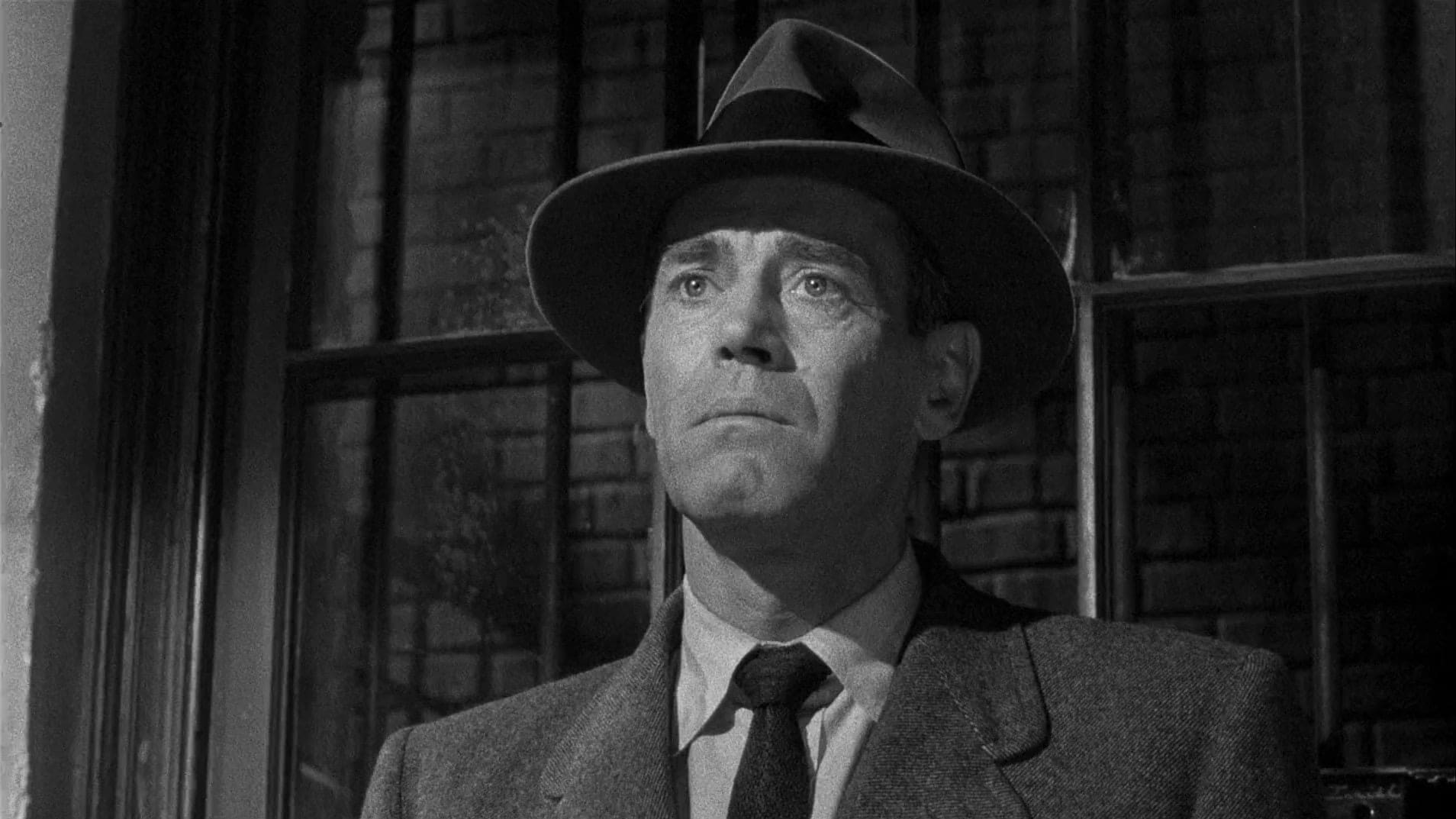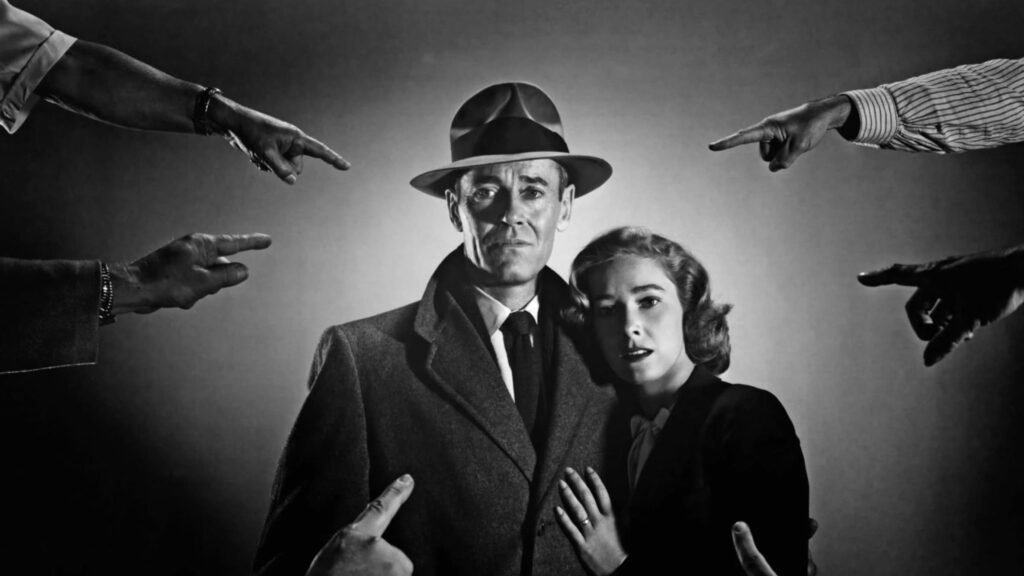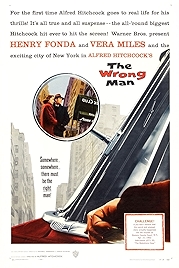Atypical and yet very typical, 1956’s The Wrong Man is Alfred Hitchcock’s tilt at those noirish ripped-from-the-headlines crime dramas that were all the rage when people still said “all the rage”, films sold on authenticity and with a dedication to telling it how it was.
That’s what’s behind Hitchcock dropping his usual comedy cameo early in this movie and settling instead on a moody, backlit intro in which the man himself informs us that what we are about to see is stranger than all the films he’s made before, and yet… “this is a true story. Every bit of it.”
He is pretty much as good as his word. This is the story of Christopher Emmanuel Balestrero, a player of the upright bass at the Stork Club in New York who was one day arrested for having committed a series of hold-ups. He can’t have done them, of course, since Balestrero, “Manny” to his wife and friends, isn’t just a devoted family man, non-drinker and all round straight edge, in this film he’s also played by Henry Fonda at his most upstanding and obviously innocent.
The “typical” aspect is that Hitchcock’s films – The 39 Steps or North by Northwest are prime examples – are so often about “the wrong man” being hounded for some crime he never committed. Those films bristle with Hitchcock’s showmanship – set pieces, witty dialogue, locations, McGuffins and gadgets – but in The Wrong Man Hitchcock drops all that and shoots on the mean streets and in the actual places where Balestrero’s story played out. At least for a while. Towards the end he got bored with sitting around in cars in the cold and decamped to the studio – it’s obvious which bits are shot “for real” and which are not.
Having largely turned his back on his usual MO, Hitchcock decides that what’s needed to inject a litte bit of pizzazz into what is otherwise a faintly dull story – Manny is not guilty, there is nothing much more to be said – is a lot of Kafka-style paranoia.
There is a powerful sense of the sinister in this film. So many unsmiling cops glad-handing Manny into the penal system, so many witnesses stonily identifying the wrong man as the right man. It is in many ways a textbook example of a case built on what would today be called confirmation bias. Once Manny has been tagged as potentially guilty, people fall over themselves to agree with the description and so incriminate him further. And once he’s on the slippery slide of “justice” – there is no such thing in this film, and all the “authorities”, whether private or public, get short shrift – Manny just gets guiltier.
It’s a good chance to see Hitchcock’s superb command of craft dissociated from Barnum and Bailey theatrics. The camera does the work, swooping in and then out on Fonda’s face, presenting the strangeness of every new scenario Manny is presented with – the shoes of the professional criminals he shares a paddy wagon with, the brassy materiality of the handcuffs he is locked into, the narrowness of the cell he is confined to, where Hitchcock’s camera goes round and round in a mad moment of expressionistic excess before everything fades to black.
Perhaps a little less faithfulness to actual events would have made for a more dramatic film. The descent of the wife (Vera Miles) into a full-on breakdown did happen but distracts from the drama already going on in Manny’s life, and the arrival of a decent lawyer (Anthony Quayle), in the end also turns out to be immaterial to the story.
It’s a case of one third great – and really great – and the last third a bit meh. Touches of European arthouse mixed in with a thoroughgoing critique of the American way. They’re unusual for Hitchcock at this point in his career, though another way of looking at The Wrong Man is as a warm-up for Vertigo – which gave us more expressionism, more social critique, more madness, and a film that could also have been called The Wrong Woman.
The Wrong Man – Watch it/buy it at Amazon
I am an Amazon affiliate
© Steve Morrissey 2023


